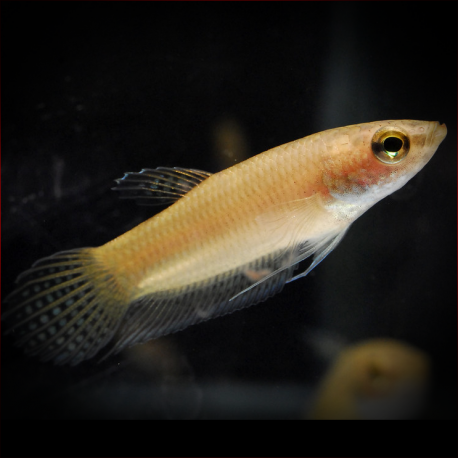More info
Datasheet
| Minimum Tank Size | 60 litres / 15.85 US gallons |
| Maximum Size | 5.0cm / 1.97inches |
| Temperature | 22°C / 71.60°F - 28°C / 82.40°F |
| Hardness | 0.00dgH / 0ppm - 5.04dgH / 90ppm |
| pH | 5.0-7.0 |
General Description
Betta stigmosa is part of the Betta pugnax complex, characterized by a large head, brown coloration with green or blue iridescent spots, and pointed anal fins. Belonging to the family Osphronemidae, this species has adapted to various ecological niches, including stagnant ditches and acidic peat swamp forests. Possessing a labyrinth organ for breathing, B. stigmosa requires clear, flowing water with dense riparian vegetation in forest hill streams.
Aquarium Setup
The minimum tank size required for Betta stigmosa is 60 liters, with a preference for dim lighting and sheltered areas. Decorate the tank with driftwood, roots, and branches to create shady spots and include dried leaf litter for a natural feel and microbe colony growth. Suitable aquatic plants such as Microsorum pteropus and Cryptocoryne spp., along with floating vegetation, can be added. Gentle filtration using an air-powered sponge filter is recommended, and keep the tank partially full to allow access to the layer of humid air above the water surface.
Behaviour
Due to its requirements and disposition, Betta stigmosa is best kept alone or with very peaceful species, as larger or more vigorous fish may intimidate or outcompete it. Compatible tankmates include small cyprinids and loaches that inhabit similar environments. This species can be kept in pairs or groups, exhibiting interesting behavioral interactions under group conditions.
Feeding and Diet
In the wild, B. stigmosa preys on insects and small invertebrates. Captive specimens readily accept dried foods but should be regularly offered live or frozen foods like Daphnia, Artemia, or bloodworms to maintain optimal color and condition. Small insects such as crickets can also be fed after filling their stomachs with fish flakes or vegetable matter. Care should be taken not to overfeed, as Betta species are prone to obesity.
Reproduction & Dimorphism
Betts stigmosa is a paternal mouthbrooder, requiring a separate breeding tank with a tight-fitting cover to ensure optimal fry development. After a courtship ritual, spawning occurs, with the male wrapping around the female during fertilization. The male carries the fertilized eggs in his mouth until they hatch into free-swimming fry, which can immediately consume foods like microworms and Artemia nauplii. Male fish are larger and exhibit more iridescent scaling on the head than females.
Habitat and Distribution
This species is found in forest hill streams with clear, flowing water, characterized by rocks, gravel, fallen leaves, and submerged tree roots. The typical habitat includes dense riparian vegetation, providing shelter and a variety of microhabitats. The natural range of Betta stigmosa includes streams near the Sekayu waterfalls in Terengganu, Peninsular Malaysia, and nearby forested areas.

